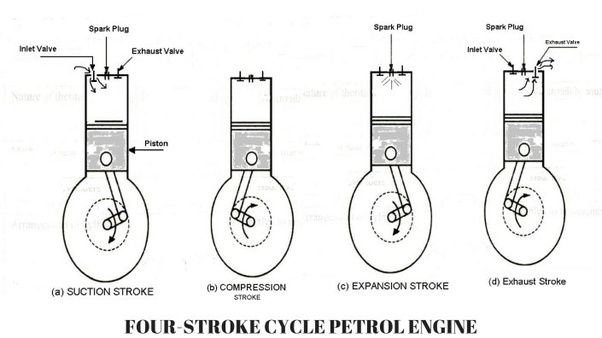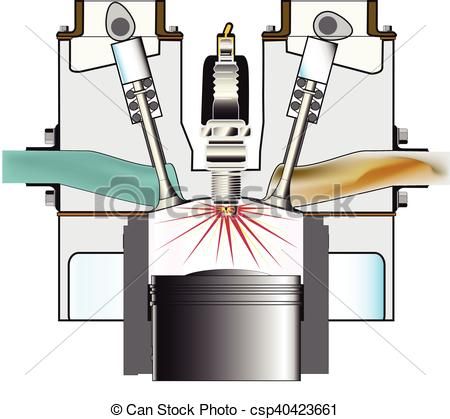Working Of Four-Stroke Petrol Engine
Jun 20, 2019 • 5 views
Hey, Guys;
At the present situation in the modern world, everywhere there is a two-wheeler or four-wheeler mostly 97.6% of the vehicles are running in the petrol engine. Now today's topic we are going to see about working of a four-stroke petrol engine and the working principles of the four-stroke petrol engine and the concept behind it. The name itself it images four-stroke, so it has four different components to work on it. Now we are going to see details about the four-stroke petrol engine and the working principle and the concept.
Suction Stroke
Compression Stroke
Power Stroke
Exhaust Stroke
These are the four-stroke of the petrol engine let's see deeply of the petrol engine.

Suction Stroke:
During this stroke, the inlet valve is kept open and the exhaust valve kept closed. The piston comes down to the bottom dead center (BDC) from the top dead center (TDC). Pressure in the cylinder will be slightly less than the atmospheric pressure. Petrol-air in the correct proportion from the carburetor is drawn inside the engine cylinder through the inlet valve.
Compression Stroke:
In this stroke, both the inlet valve and the exhaust valve are kept closed. The mixture of petrol-air is compressed when the piston moves up to top dead center. The compression ratio varies from 7-10 for the petrol engines. The ratio between the cylinder volume before compression to the volume after compression is known as the compression ratio. At the end of the compression stroke, a spark is produced at the spark plug due to the which combustion starts resulting in high pressure and the temperature which are comparatively less than of a diesel engine.
Working or Power Stroke:
During this stroke, both the inlet valve and the exhaust valve are kept closed. The piston is pushed down from the top dead center to the bottom dead center. The force above the piston is transmitted to the crankshaft through the connecting rod and the crankshaft mechanism. Excess energy due to the combustion chamber is stored in the flywheel which helps for the operation of three idle strokes.
Exhaust Stroke:
During this stroke, the inlet valve is kept closed and the exhaust valve is kept open. The piston moves up from the bottom dead center to the top dead center. The waste gases are sent out to through the exhaust valve and the cycle is repeated. This is also called scavenging.
During these four strokes, the crankshaft will make two revolutions. The thermal efficiency of a four-stroke engine is higher compared to a two-stroke cycle engine. Most of the cars operate on a 4-stroke cycle.

